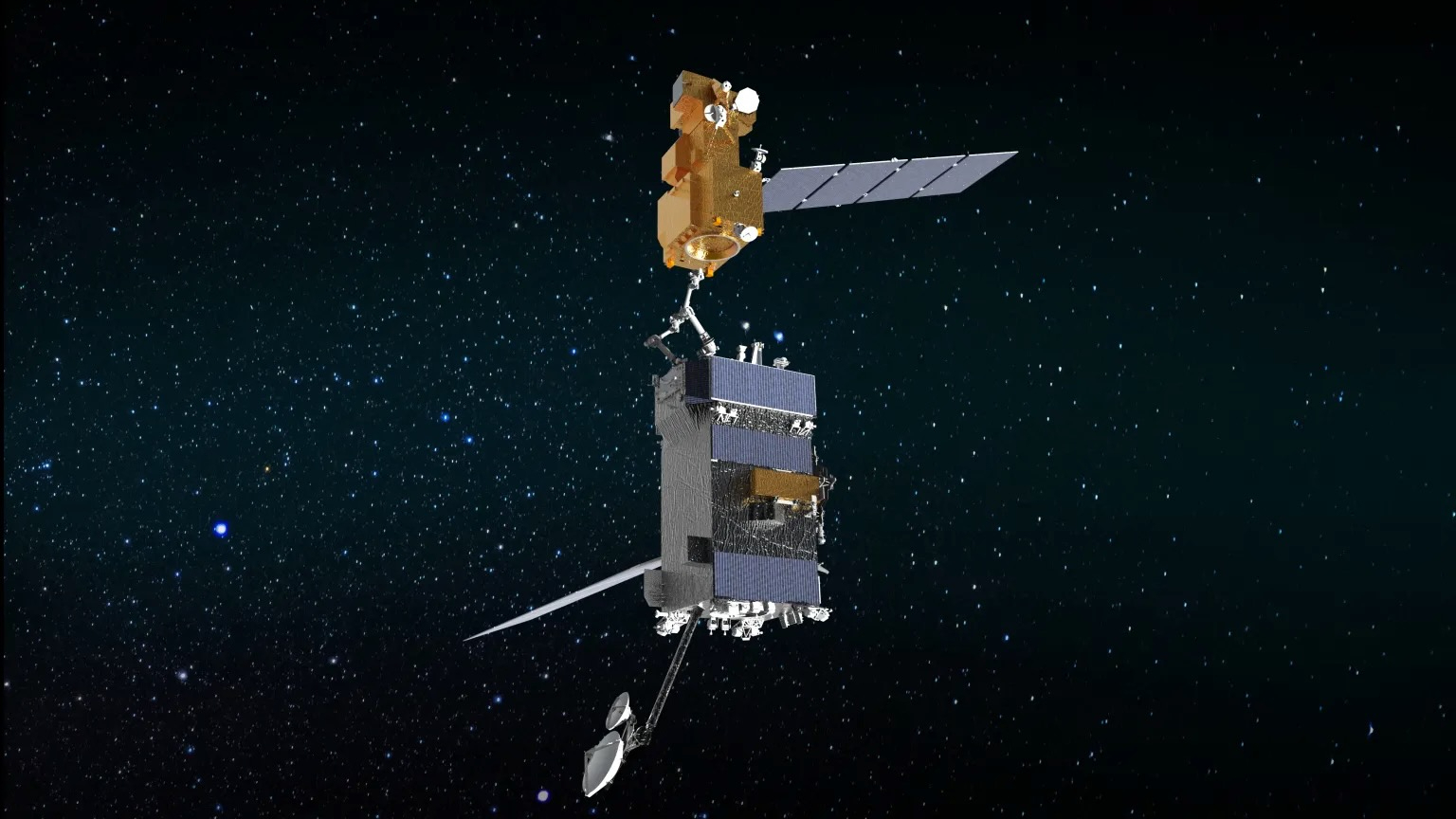
NASA has canceled a complex and costly satellite-servicing demonstration mission.
The On-Orbit Servicing, Assembly and Manufacturing (OSAM)-1 spacecraft was to use a robotic arm and other tools to grapple the Landsat 7 Earth-observation satellite and refuel it. OSAM-1 also would have carried the Space Infrastructure Dexterous Robot (SPIDER) payload, which included a lightweight 16-foot (5 meters) robotic arm that was designed to help it assemble an antenna while in orbit.
NASA announced it was scrapping the OSAM-1 mission in a March 1 statement. The move follows an in-depth, independent project review that found continued technical, cost and schedule challenges. It also noted a "broader community evolution away from refueling unprepared spacecraft."
Related: On-orbit satellite servicing: The next big thing in space?
"Following Congressional notification processes, project management plans to complete an orderly shutdown, including the disposition of sensitive hardware, pursuing potential partnerships or alternative hardware uses and licensing of applicable technological developments," the statement read.
The mission was afflicted by huge cost overruns and delays, according to a SpaceNews report. OSAM-1 was earlier projected to cost between $626 million and $753 million, but the total was estimated to have risen to over $2 billion, according to an October 2023 report by NASA’s Office of Inspector General.
NASA leadership is also considering how to best minimize the impacts of the cancellation on the workforce at the agency’s Goddard Space Flight Center in Greenbelt, Maryland.
Many companies are now developing satellite servicing technologies, with approaches including designing satellites with built-in refueling ports, according to SpaceNews. This reduces the complexity of adding fuel to a spacecraft. OSAM-1, meanwhile, would have topped up a satellite unprepared for such operations.







